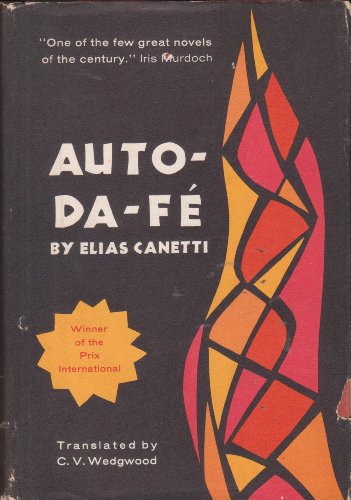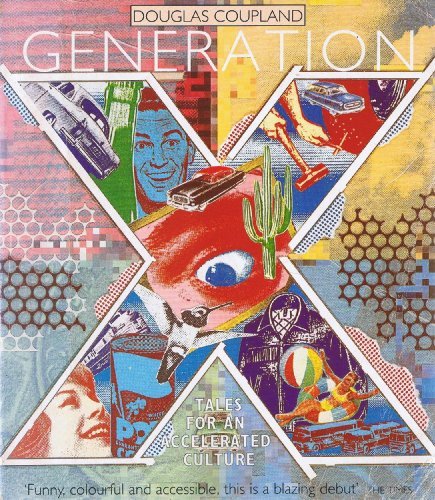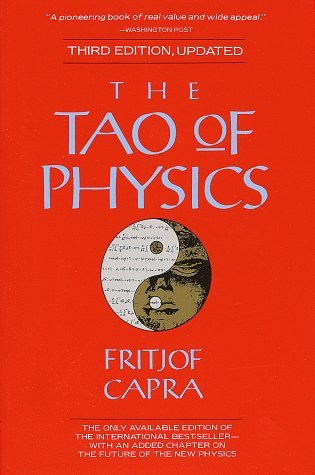Get Free Ebook Auto-da-Fé, by Elias Canetti
How can? Do you believe that you do not require sufficient time to opt for shopping book Auto-da-Fé, By Elias Canetti Never mind! Simply rest on your seat. Open your gadget or computer and also be on the internet. You can open up or check out the web link download that we provided to obtain this Auto-da-Fé, By Elias Canetti By by doing this, you can get the on the internet e-book Auto-da-Fé, By Elias Canetti Reading the book Auto-da-Fé, By Elias Canetti by online can be actually done conveniently by saving it in your computer as well as device. So, you could continue whenever you have leisure time.

Auto-da-Fé, by Elias Canetti

Get Free Ebook Auto-da-Fé, by Elias Canetti
Just how if there is a site that enables you to hunt for referred publication Auto-da-Fé, By Elias Canetti from all over the world author? Automatically, the website will be incredible completed. Many book collections can be found. All will be so simple without complicated point to relocate from site to website to obtain guide Auto-da-Fé, By Elias Canetti really wanted. This is the website that will give you those requirements. By following this website you could obtain whole lots numbers of publication Auto-da-Fé, By Elias Canetti compilations from variants types of writer as well as publisher preferred in this globe. Guide such as Auto-da-Fé, By Elias Canetti and others can be acquired by clicking great on link download.
Reading book Auto-da-Fé, By Elias Canetti, nowadays, will not compel you to always purchase in the store off-line. There is a terrific location to purchase the book Auto-da-Fé, By Elias Canetti by on-line. This website is the best site with great deals numbers of book collections. As this Auto-da-Fé, By Elias Canetti will be in this book, all books that you need will certainly be right below, as well. Merely search for the name or title of the book Auto-da-Fé, By Elias Canetti You could find what exactly you are looking for.
So, even you need responsibility from the business, you could not be perplexed any more considering that books Auto-da-Fé, By Elias Canetti will constantly assist you. If this Auto-da-Fé, By Elias Canetti is your finest partner today to cover your job or work, you can as soon as feasible get this book. How? As we have actually told formerly, merely visit the link that our company offer right here. The verdict is not just the book Auto-da-Fé, By Elias Canetti that you search for; it is exactly how you will get numerous publications to support your ability as well as capability to have great performance.
We will certainly show you the best and also easiest means to obtain publication Auto-da-Fé, By Elias Canetti in this world. Lots of collections that will certainly sustain your obligation will be below. It will certainly make you feel so best to be part of this web site. Ending up being the member to always see just what up-to-date from this publication Auto-da-Fé, By Elias Canetti site will make you feel ideal to hunt for guides. So, just now, and also here, get this Auto-da-Fé, By Elias Canetti to download as well as save it for your priceless worthwhile.

"Translated from the German under the direct supervision of the author."
- Sales Rank: #3330814 in Books
- Published on: 1946
- Binding: Hardcover
- 464 pages
Most helpful customer reviews
58 of 58 people found the following review helpful.
The bizarre Homeric odyssey of a reclusive bookworm
By D. Cloyce Smith
The history of Canetti's odd, inventive novel provides clues to its understanding. According to his memoirs, Canetti originally conceived the "Human Comedy of Madmen," a fictional cycle portraying eight characters. Of these, only one character lived on in his imagination: Brand the Book Man. Inspired by Gogol, modeled after Stendhal's "The Red and the Black," and informed by Jacob Burckhardt's "History of Greek Civilization," Canetti's surviving portrait is an allegorical odyssey of a recluse who lives only for his books.
Yet those already familiar with "Auto da Fe" know that there is no character named Brand in the book. During the year (1930-31) that Canetti finished his novel, he changed the main character's name from Brand [German for conflagration] to Kant and the novel's title to "Kant Catches Fire." Canetti explains in the second volume of his memoirs that the lingering emotions he felt from his presence when a mob burned down Vienna's Palace of Justice in 1927 made this new title "hard to endure." And so "Kant became Kien [German for resinous pinewood]; the ignitability of the world, a threat that I felt, was maintained in the name of the chief character." Likewise, he changed the title to Die Blendung [The Blinding], a reference to the biblical legend of Samson. It was under this title that the book was published in 1935, but it was soon banned by the Nazis.
The main character is a leading Sinologist whose meticulous scholarship and linguistic expertise make him famous among an elite group, but Kien's lack of social skills ultimately defines him: he refuses to be part of the crowd (the dynamics of which is one of Canetti's real-life intellectual preoccupations). Kien's 25,000-volume library overtakes his entire apartment, the 40,000 characters of the Chinese alphabet challenge his intellect, and his only human relationships are daily contacts with a housekeeper of eight years and morning ventures to the bookshops that dot the city of Vienna. His cloistered life is shattered, however, when he decides to marry the housekeeper; her conniving greed is eventually wedded to the brute force of the building's superintendent, a retired police officer whose nascent fascism finds full expression in his treatment of Kien. Eventually, Kien conflates his fear and hatred of his wife with the misogyny he has learned from his vast readings.
Simultaneously bizarre and uncomplicated, the story reads like a 450-page Homeric epic filtered through the psychoses of the Brothers Grimm. Expelled from his book-dominated oasis, Kien descends into the underworld of Vienna, a journey that results in the destruction of the world as he knows it. Dwarfs, prostitutes, blind men--each of the major and minor characters develops his or her own perspective of the events through which they live; when their internally consistent yet outwardly incongruent worlds clash, the results alternate between absurdity and madness. What it is all supposed to mean will engage the patient reader's imagination for weeks.
10 of 12 people found the following review helpful.
Auto-Da-Fe
By bstrue
Took me several months to read this book. The story crept through me and began to take over my thoughts--as schizophrenic as that appears, it's how I felt. I put the book down, and when I felt able to go on, sometimes page by page, I did so. Amazing, unforgettable, horrifying, remarkable, and beautifully translated; should be at or near the top of every must-read list of books.
8 of 8 people found the following review helpful.
This world has to burn
By Guillermo Maynez
Originally published in 1935, "Auto da Fe" is un unclassifiable book. It is the work of a lucid man about totally demented characters. That is, if you examine them from the point of view of our "normal" world. From their own perspective, however, all act in the most rational, coherent way. Maybe the only way to approach this book and enjoy it is with a very-dark-humor attitude, capable of digesting all of humanity's vices and weaknesses, exposed sordidly. The book admits a thousand interpretations, but possibly the most obvious ones are: humans' inability to communicate with each other; the construction of reality as a phenomenon elaborated and only occurring within every one's mind; and the will to self deception that dominates us.
The first part "A head without a world", tells us the life of Peter Kien "the greatest sinologist in the world", a 40 year old man, asexual, who lives cloistered in his apartment, wiht his 25 thousand-books library, totally isolated in his ivory tower, and alienated from people and the world around him. Trying to find symbolisms, he might represent the German intellectuals who chose not to see, in the 1930's. In fact, one's voluntary self-limitation of the visual field is the dominant theme of the book, and all the characters practice it. Self-deceived and worried about the fate of his library, Kien decides to marry his maid, Therese, who has been with him for eight years. Therese turns out to be ambitious, vulgar, also self-delusional, and above all, intrusive, which obviously makes the marriage a disaster. A tragicomic one which ends in Therese throwing Kien out of his apartment. As a satire of marriage, it's perfect.
The second part, "A world without a head", tells the crazed adventures of Kien through the unnamed Vienna. During one of his vagaries by the libraries, Kien enters a sordid brothel. There, the Quixotic Kien (tall and thin and all), finds a Sancho in the figure of the sinister criminal Fischerle, Jew, dwarf, crooked, thief, and pimp. Fischerle proceeds to manipulate and expoliate Kien, helped by a motley crew which includes a worker of the sewers, a falsely blind beggar, a peddler, and a dwarf female newspaper seller. Around the pawning shop, a crazy farce develops which ends with all the characters in the police quarters. Along the story appears another main character, the superintendent of Kien's building, Pfaff, a brutal ex cop obsessed with beating women, who has actually murdered his wife and daughter. He may be said to represent the up and coming Nazis, though Canetti never uses the word at all. The third part, "A World in the Head", wraps it all up in a crazy way.
This is a unique novel, surely appreciated only by a few people, as it is difficult to digest for people looking for a more conventional depiction of the world, or for faint-hearted or overly sensitive persons, not to speak of the politically correct, who will surely miss the point entirely, as it is a humanistic work protective of universal values and tolerance (from a paradoxical point of view). It is, at the same time, a universal work, full of brilliant, profound and provocative sentences, and a work representative of the craziest century in history: the XXth. A work of genius.
See all 36 customer reviews...
Auto-da-Fé, by Elias Canetti PDF
Auto-da-Fé, by Elias Canetti EPub
Auto-da-Fé, by Elias Canetti Doc
Auto-da-Fé, by Elias Canetti iBooks
Auto-da-Fé, by Elias Canetti rtf
Auto-da-Fé, by Elias Canetti Mobipocket
Auto-da-Fé, by Elias Canetti Kindle
>> Get Free Ebook Auto-da-Fé, by Elias Canetti Doc
>> Get Free Ebook Auto-da-Fé, by Elias Canetti Doc
>> Get Free Ebook Auto-da-Fé, by Elias Canetti Doc
>> Get Free Ebook Auto-da-Fé, by Elias Canetti Doc



![, by Michio Kaku - Parallel Worlds: A journey through creation, higher dimensions, a (2005-01-12) [Hardcover], by Michio Kaku , by Michio Kaku - Parallel Worlds: A journey through creation, higher dimensions, a (2005-01-12) [Hardcover], by Michio Kaku](http://ecx.images-amazon.com/images/I/51XE2y88RnL.jpg)
![, by Michio Kaku - Parallel Worlds: A journey through creation, higher dimensions, a (2005-01-12) [Hardcover], by Michio Kaku , by Michio Kaku - Parallel Worlds: A journey through creation, higher dimensions, a (2005-01-12) [Hardcover], by Michio Kaku](http://bookprem.com/img/cta-1.png)









![[(Child Abuse Trauma: Theory and Treatment of the Lasting Effects)] [Author: John N. Briere] published on (November, 1992), by John N. Bri [(Child Abuse Trauma: Theory and Treatment of the Lasting Effects)] [Author: John N. Briere] published on (November, 1992), by John N. Bri](http://ecx.images-amazon.com/images/I/41xjBf9TJsL.jpg)




